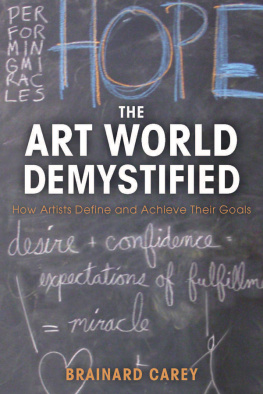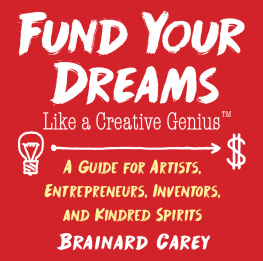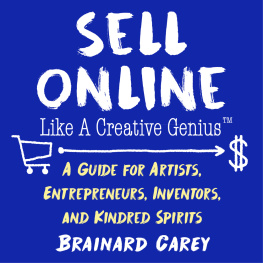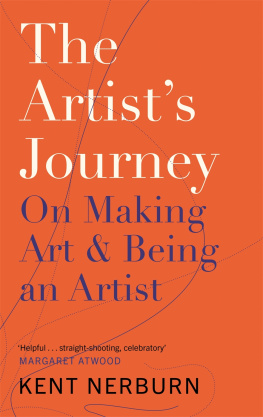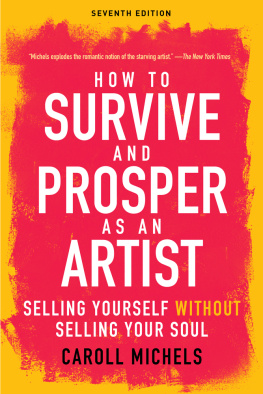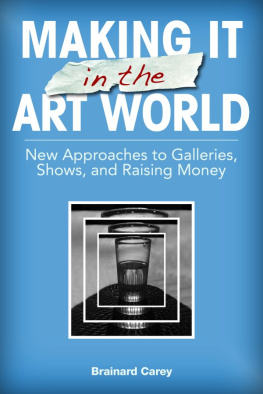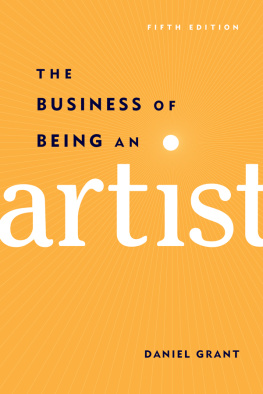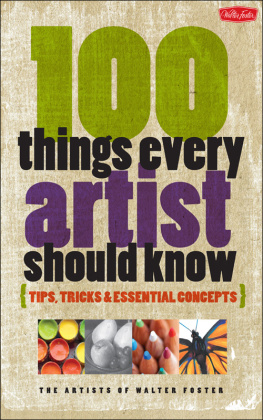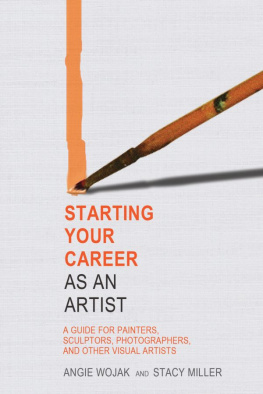Copyright 2016 by Brainard Carey
All rights reserved. Copyright under Berne Copyright Convention, Universal Copyright Convention, and Pan American Copyright Convention. No part of this book may be reproduced, stored in a retrieval system, or transmitted in any form, or by any means, electronic, mechanical, photocopying, recording or otherwise, without the express written consent of the publisher, except in the case of brief excerpts in critical reviews or articles. All inquiries should be addressed to Allworth Press, 307 West 36th Street, 11th Floor, New York, NY 10018.
Allworth Press books may be purchased in bulk at special discounts for sales promotion, corporate gifts, fund-raising, or educational purposes. Special editions can also be created to specifications. For details, contact the Special Sales Department, Allworth Press, 307 West 36th Street, 11th Floor, New York, NY 10018 or .
19 18 17 16 15 5 4 3 2 1
Published by Allworth Press, an imprint of Skyhorse Publishing, Inc.
307 West 36th Street, 11th Floor, New York, NY 10018.
Allworth Press is a registered trademark of Skyhorse Publishing, Inc., a Delaware corporation.
www.allworth.com
Cover design by Mary Belibasakis
Cover photo credit: Brainard Carey
Library of Congress Cataloging-in-Publication Data is available on file.
Print ISBN: 978-1-62153-484-6
Ebook ISBN: 978-1-62153-494-5
Printed in the United States of America
Table of Contents
This book is dedicated to Shiva, my son.
Acknowledgments
T his book was written with the encouragement and astute observation of Tad Crawford who solicited me to write the first volume, Making It in the Art World , and I am grateful for the deadlines he has been giving me ever since then. My wife and business partner, Delia Carey, is also a dreamer like me, and one of the dreams we have achieved is to do what we like and not work for a traditional boss. She is an entrepreneur like myself, and together we have built our art careers and the business of helping other artists through our website, www.theartworlddemystified.com. Conventional wisdom says you should not partner with your wife or husband in business matters, but for us, it has only helped our relationship. The fact is that after sixteen years we are still in love. We are lucky, as we are growing together and meeting challenges that are stimulating. We both feel that husband-and-wife collaborations can be rewarding on many levels.
Introduction
I am not a saint or a sage, or a marketing writer with a recipe for success. I am an artist and I have interviewed hundreds of other artists, curators, critics, and other members of the art world. What I know, they have taught me. As an artist myself, I have also learned a lot by asking for things and failing to get what I want. I have learned that asking is often the hardest partasking for a show, asking for a grant, asking for support.
Full-Time Artist
I am an optimist, and you will probably find this book motivating because I am genuinely excited about the art world and the opportunities there are for artists and arts administrators. However, I also want to present a sober and serious look at the chances of earning a full-time living off of your art and the choices you will have in the context of the interviews I have done.
In all the interviews I have done (over three hundred as of 2016), there are some common threads as artists explain their failure and success stories and curators explain their methods. Here is a brief overview of what I have heard and what seems to point at the truth.
Luck
To begin with, there are some artists I talked to who succeeded very quicklywho at twenty-four years old won major prizes at shows, and continued to win major awards, getting prestigious teaching positions and gallery and museum exhibitions all over the world. In some cases, luck was involvedbut the kind of luck that happens when you visit one hundred galleries asking if they are looking for artists.
There is rarely dumb luck, and most stories about luck and great opportunities are actually about persistence and not giving upand then suddenly you meet someone by accident, and it is a meeting that changes your life.
This has happened to almost everyone, including the gallery owners and museum directors I have talked to. An example would be the artist who has been asking gallery after gallery for a show, and after months of rejection finds that her roommate is opening a gallery that then shows her work in the first show, launching her career. Those kinds of things happen all the time, but the failures that the artist was having and that her roommate was witnessing were also significantand something you cannot force by replicating her failures. That is one the most complex aspects of building a career in arthow can you force the hand of luck? You cant, of course, but you can tilt the odds in your favor so that more possibilities arise. You can see that this might mean you have to keep your day job until something better happens, because this is a process to be dedicated tofor life.
Day Job
Unlike most other careers that I can think of, art making is one that usually requires a second job. One that often relates to the art making, but not always. Traditionally, this is a good thinghave a job that doesnt demand too much of your time, and spend the rest of your free hours making art. Most of the artists I interviewed, but not all, had day jobs like teaching, painting portraits, being a doctor, or some other kind of work they might also enjoy. Some wanted to quit their day jobs, but most didnt, feeling it gave them freedom to explore in the studio without the financial pressure of having to sell their art every week or every month.
The wisdom of many artists on the day job is that it should not be viewed as a negative aspect of your life, but one that must be adjusted correctly to support yourself enough so there is still time to make art. It does not mean that you should not aspire to be whatever kind of artist you like, as well as to the large financial gains of which you might dream, but that the day job should not be seen as a measure of your success. Pure success for an artist means making work in the studio on a regular and ongoing basis that is always changing and rewarding to the artist in terms of aesthetics and challenges.
How much you earn does not determine your success as an artist at all. We know this is the case from the hundreds of artists from history who were not financially successful at all in their lifetime, but ended up in the history books because their work is goodor greatand has some real aesthetic value that can still be enjoyed.
So whatever your day job is or is not, be proud that it is the sponsor of your art career and that you are following the path that artists have taken for hundreds of years. Does this mean that if you simply make good work, the world will eventually notice it?
Meritocracy
If you simply strive to make good work, you are doing your job as a professional artist. If, however, you feel that the quality of work alone will rise to the top so to speak, and that by merit alone you will find professional opportunities, you will be disappointed. In this day and age, excellent work is needed and required, but not alone. You will need the support of your peers, a good dose of networking, some charm, and the ability to write.
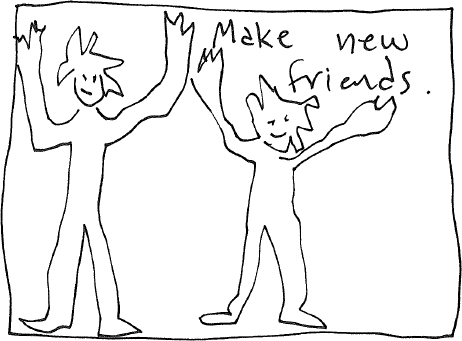
This is the third book I have written for artists to develop their careers in a professional manner. More resources are online at www.theartworddemystified.com. The difference between this book and the other two, Making It in the Art World and New Markets for Artists , is that this book focuses primarily on demystifying the terms and ideas about what the art world actually is and how it functions. There is also a great deal of practical advice and clear directions in this book to build your professional career as an artist; essentially this book was written to clarify misconceptions that can burden an artist and drag them down by simply being mysterious.

